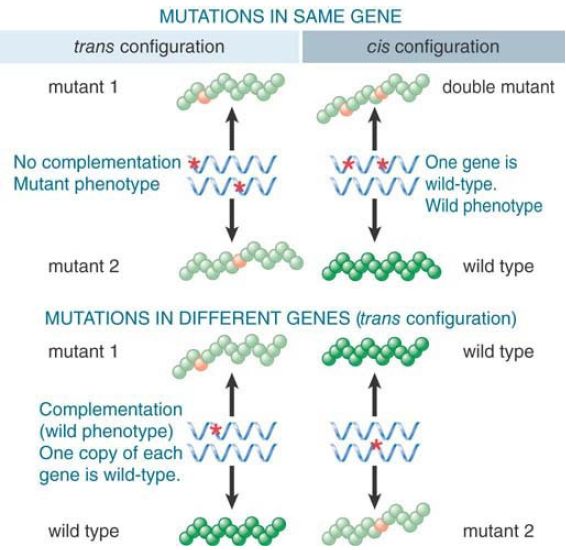

النبات

مواضيع عامة في علم النبات

الجذور - السيقان - الأوراق

النباتات الوعائية واللاوعائية

البذور (مغطاة البذور - عاريات البذور)

الطحالب

النباتات الطبية


الحيوان

مواضيع عامة في علم الحيوان

علم التشريح

التنوع الإحيائي

البايلوجيا الخلوية


الأحياء المجهرية

البكتيريا

الفطريات

الطفيليات

الفايروسات


علم الأمراض

الاورام

الامراض الوراثية

الامراض المناعية

الامراض المدارية

اضطرابات الدورة الدموية

مواضيع عامة في علم الامراض

الحشرات


التقانة الإحيائية

مواضيع عامة في التقانة الإحيائية


التقنية الحيوية المكروبية

التقنية الحيوية والميكروبات

الفعاليات الحيوية

وراثة الاحياء المجهرية

تصنيف الاحياء المجهرية

الاحياء المجهرية في الطبيعة

أيض الاجهاد

التقنية الحيوية والبيئة

التقنية الحيوية والطب

التقنية الحيوية والزراعة

التقنية الحيوية والصناعة

التقنية الحيوية والطاقة

البحار والطحالب الصغيرة

عزل البروتين

هندسة الجينات


التقنية الحياتية النانوية

مفاهيم التقنية الحيوية النانوية

التراكيب النانوية والمجاهر المستخدمة في رؤيتها

تصنيع وتخليق المواد النانوية

تطبيقات التقنية النانوية والحيوية النانوية

الرقائق والمتحسسات الحيوية

المصفوفات المجهرية وحاسوب الدنا

اللقاحات

البيئة والتلوث


علم الأجنة

اعضاء التكاثر وتشكل الاعراس

الاخصاب

التشطر

العصيبة وتشكل الجسيدات

تشكل اللواحق الجنينية

تكون المعيدة وظهور الطبقات الجنينية

مقدمة لعلم الاجنة


الأحياء الجزيئي

مواضيع عامة في الاحياء الجزيئي


علم وظائف الأعضاء


الغدد

مواضيع عامة في الغدد

الغدد الصم و هرموناتها

الجسم تحت السريري

الغدة النخامية

الغدة الكظرية

الغدة التناسلية

الغدة الدرقية والجار الدرقية

الغدة البنكرياسية

الغدة الصنوبرية

مواضيع عامة في علم وظائف الاعضاء

الخلية الحيوانية

الجهاز العصبي

أعضاء الحس

الجهاز العضلي

السوائل الجسمية

الجهاز الدوري والليمف

الجهاز التنفسي

الجهاز الهضمي

الجهاز البولي


المضادات الميكروبية

مواضيع عامة في المضادات الميكروبية

مضادات البكتيريا

مضادات الفطريات

مضادات الطفيليات

مضادات الفايروسات

علم الخلية

الوراثة

الأحياء العامة

المناعة

التحليلات المرضية

الكيمياء الحيوية

مواضيع متنوعة أخرى

الانزيمات
Mutations in the Same Gene Cannot Complement
المؤلف:
JOCELYN E. KREBS, ELLIOTT S. GOLDSTEIN and STEPHEN T. KILPATRICK
المصدر:
LEWIN’S GENES XII
الجزء والصفحة:
1-3-2021
2922
Mutations in the Same Gene Cannot Complement
KEY CONCEPTS
-A mutation in a gene affects only the product (polypeptide or RNA) encoded by the mutant copy of the gene and does not affect the product encoded by any other allele.
-Failure of two mutations to complement (produce wildtype phenotype when they are present in trans configuration in a heterozygote) means that they are alleles of the same gene.
How do we determine whether two mutations that cause a similar phenotype have occurred in the same gene? If they map to positions that are very close together (i.e., they recombine very rarely), they might be alleles. However, in the absence of information about their relative positions, they could also represent mutations in two different genes whose proteins are involved in the same function. The complementation test is used to determine whether two recessive mutations are alleles of the same gene or in different genes. The test consists of generating a heterozygote for the two mutations (by mating parents homozygous for each mutation) and observing its phenotype.
If the mutations are alleles of the same gene, the parental genotypes can be represented as follows:

The first parent provides an m mutant allele and the second parent provides an m allele, so that the heterozygote progeny have the genotype:

No wild-type allele is present, so the heterozygotes have mutant phenotypes and the alleles fail to complement. If the mutations lie in different linked genes, the parental genotypes can be represented as:

Each chromosome has one wild-type allele at one locus (represented by the plus sign [+]) and one mutant allele at the other locus. Then, the heterozygote progeny have the genotype:

in which the two parents between them have provided a wild-type allele from each gene. The heterozygotes have wild-type phenotypes because they are heterozygous for both mutant alleles, and thus the two genes are said to complement.
The complementation test is shown in more detail in FIGURE 1. The basic test consists of the comparison shown in the top part of the figure. If two mutations are alleles of the same gene, we see a difference in the phenotypes of the trans configuration (both mutations are not in the same allele) and the cis configuration (both mutations are in the same allele). The trans configuration (where the mutations lie on the same DNA molecule) is mutant because each allele has a (different) mutation, whereas the cis configuration (where the mutations lie on different DNA molecules) is wild-type because one allele has two mutations and the other allele has no mutations. The lower part of the figure shows that if the two mutations are in different genes, we always see a wild phenotype.
There is always one wild-type and one mutant allele of each gene in both the cis and trans configurations. “Failure to complement” means that two mutations occurred in the same gene. Mutations that do not complement one another are said to comprise part of the same complementation group. Another term used to describe the unit defined by the complementation test is the cistron, which is the same as the gene. Basically these three terms all describe a stretch of DNA that functions as a unit to give rise to an RNA or polypeptide product. The properties of the gene with regard to complementation are explained by the fact that this product is a single molecule that behaves as a functional unit.

FIGURE 1. The cistron is defined by the complementation test. Genes are represented by DNA helices; red stars identify sites of mutation.
 الاكثر قراءة في مواضيع عامة في الاحياء الجزيئي
الاكثر قراءة في مواضيع عامة في الاحياء الجزيئي
 اخر الاخبار
اخر الاخبار
اخبار العتبة العباسية المقدسة

الآخبار الصحية















 قسم الشؤون الفكرية يصدر كتاباً يوثق تاريخ السدانة في العتبة العباسية المقدسة
قسم الشؤون الفكرية يصدر كتاباً يوثق تاريخ السدانة في العتبة العباسية المقدسة "المهمة".. إصدار قصصي يوثّق القصص الفائزة في مسابقة فتوى الدفاع المقدسة للقصة القصيرة
"المهمة".. إصدار قصصي يوثّق القصص الفائزة في مسابقة فتوى الدفاع المقدسة للقصة القصيرة (نوافذ).. إصدار أدبي يوثق القصص الفائزة في مسابقة الإمام العسكري (عليه السلام)
(نوافذ).. إصدار أدبي يوثق القصص الفائزة في مسابقة الإمام العسكري (عليه السلام)


















